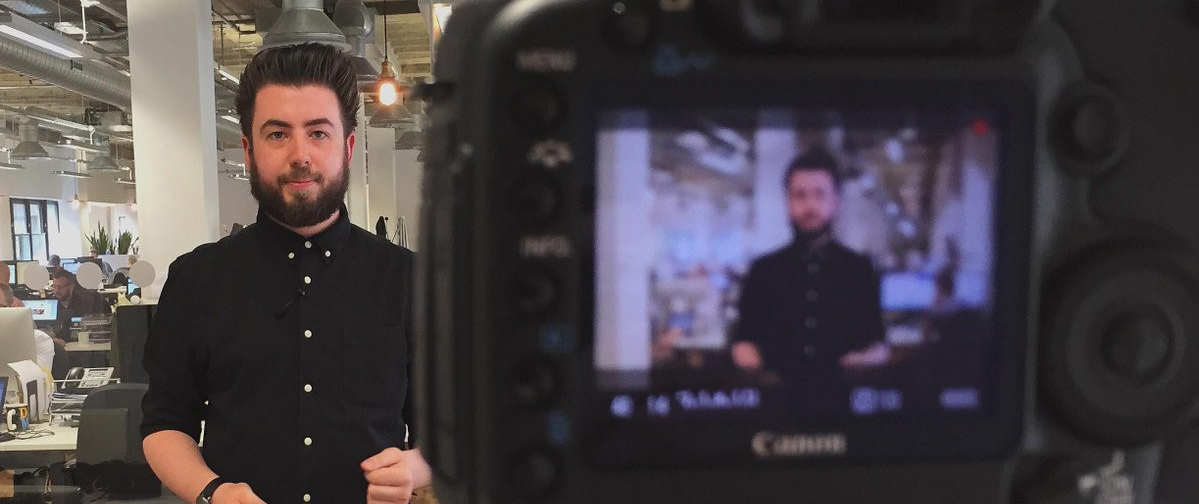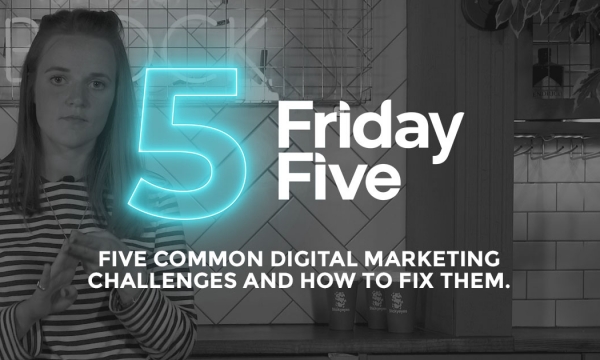Every year seems to be heralded as “the year of video” in the digital industry. But this is far from broken clock forecasting – the pace of change means that video keeps forcing itself to the top of the agenda.
In agency land, we have been talking about the dawn of a world of video rich content, multi-platform native video advertising, and highly engaged video centric communities for years. Every year was going to be “the year of video” – just like the last one, it seemed. So, was this the year that video started to dominate the hearts, minds and budgets of the marketing industry?
In the midst of a recent server clean-up, I happened to stumble upon a pile of old presentation decks, case studies and whitepapers downloaded from various sources that all seemed to suggest that 2012 was going to be the “year of video”. That’s right. In the year that we were able to watch the London Olympics, the Diamond Jubilee and Felix Baumgartner’s space jump, we were also predicting that video content was going to become the dominant force in marketing communications.

That might have been a bold claim, but it was not without its justification. Video-related ranking factors became a bigger part of the Google algorithm, video content was featuring in rich snippets in the search results, Netflix was dominating the business news, and UK home broadband availability tipped over the 50% acceptance rate. In light of that, marketers were considering traditional data-driven research to fuel their creative ideation sessions and creating far more efficient methods of producing flexible and personalised digital video pipelines.
Of course, processes, capabilities, technologies and techniques have progressed since then but following the declaration that 2012 would be the “year of video”, similar predictions followed in 2012, 2013, 2014, 2015, and so on. It seemed that every year was being heralded as the “the year of video” (or at least, the year of increased video engagement levels against traditional static display advertising).
But are these proclamations accurate, or has the industry been relying on broken clock theory?
Growing demand for video, but only the right video
Year after year, we honed our skills. Year after year, we were amazed by the growth in this medium. Year after year, we were taken aback by the insatiable demand from consumers for video content.
Digital video ad spend is up 15% YOY from 2017. Tweets with video currently see ten times more engagement than those without. More than five billion videos are viewed on YouTube every single day. With statistics like that, it stands to reason that the predictions have plenty of merit to them.

But the popularity of video has brought its own challenges that many of the predictions perhaps didn’t acknowledge. Declaring “the year of” anything has a tendency to lead a train of though that investing in said thing is a relatively straightforward pathway to achieving whatever goals you want to achieve.
It’s important to remember that video, just like any other form of content, is merely a medium. A very powerful medium, but merely a means to achieve a marketing and commercial goal. What matters is not the medium itself, but the impact that the message carried by that medium has on the intended audience.
Which is why the industry has become much more adept at not only creating video and filling up the YouTube servers, but at meeting that consumer demand for much more unique, creative and above all, targeted video.
We regularly talk about content deployment and distribution and as more and more video content vies for the attention of consumers, the way in which brands target and personalise their video content to those key audience segments becomes much more important. It is one thing to have a message but it is quite another to personalise that message to an audience on a micro-level, targeting on sometimes small behavioural traits of those audiences to create something that really connects.
Personalisation at scale
The demand for hyper-personalised video does however create a demand for much more video content, but that in turn places much greater demands on budget and resources.

In order to meet these demands, publishers have had to think much more carefully about not only their audiences and the story that they are trying to convey, but how they streamline the production process to maximise the volume of content that they can create to meet those personalisation demands without exponentially increasing costs. That means much more considered storyboarding and pre-production, greater understanding of the relevant video platforms, better utilisation of dynamic elements as well as more considered distribution strategies and media plans.
All of this is designed to make the process and production of video content as effective (both in terms of the top line and bottom line) as possible.
The next “year of video”?
And as someone who has predicted the peak (wrongly) for years now, I wager we haven’t reached its saturation point in 2019 either. It’s the fundamental simplicity, and emotional involvement of the moving image, that keeps us coming back to video again and again. The average viewer watches 67 minutes of video content a day. That’s up 16% on 2018, and the direction of travel only points to more growth.
Facebook’s investment in original content, the rise of live platform native infrastructure improvements (such as Instagram video) and the global optimisation for defining targeting factors for advertising expenditure all point to social platforms pushing to create stable and ‘brand friendly’ media buying spaces.
Video in 2019 (& 2020 – I’ll just get it in there now!) is simply a necessity for any marketing strategy. It’s a medium that is capturing attention and it is a medium that search engines and social media platforms are responsive to. The challenge for brands is finding where video can fit into their content calendars.
So how do we ramp things up next year?
For now, as both content producers and publishers, there needs to be a focus on four key areas.
- Content Infrastructure: The foundations for creating effective video content.
- Deployment best practices: Insight-led audience targeting, segmentation and deployment.
- Efficiency (creative, production, and deployment): Ensuring that you can create volumes of content at scale.
- Video search optimisation: Ensuring that your content is optimised for search.
With this as a solid base, everything you create should be aiming in the right direction, with the best possible chance of success.
Anyone in a ‘media rich agency’ knows that SEO & distribution are the name of the game when it comes to high-volume traffic and engagement. Before investing in video, media agencies spent years honing search strategies and optimising content for clicks, links, engagement, and searchability. All of this work has a basis in keyword data sets, an asset fundamentally limited in video. Aside from descriptions, keywords and video metadata, there just isn’t much linguistic information to draw from, which means that platforms and content producers hoping to capitalize on video native audiences need to understand sentiment and audience engagement through other factors (as well as traditional best practices of course).

This isn’t to say that Google (YouTube) isn’t constantly improving algorithmic and semantic understanding of video content but as of 2019, the reliance on this as an SEO factor is not completely left in the hands of big brother (yet).
Brands, looking to focus on telling a story and with an eye on sustained engagement, need to take advantage of their owned channels, leveraging new factors to drive community conversation and make video a sustained and consist part of their communication infrastructure. Experimentation can be a fruitful source of potential new community members, and creating supporting brand assets native to these new media formats, allow video to be created, optimised, and deployed far more efficiently.
Demand for video content continues to grow, the engagement with video continues to grow and that will inevitably mean that the volume of content will continue to grow. The only question is how brands are going to make their content connect with those core audience segments.
The year of video? Absolutely – just like the last one.


